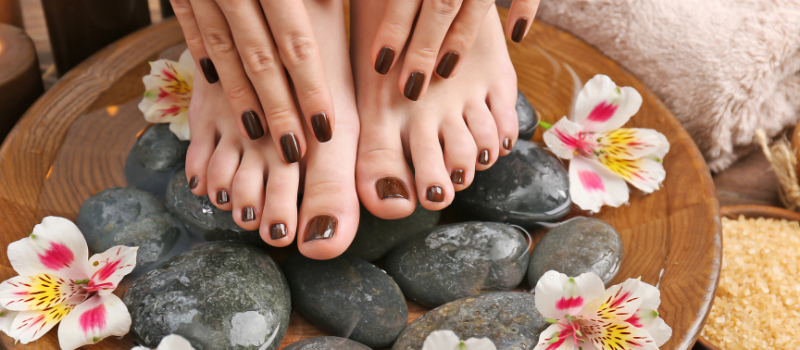The Role of the Largest Organ - Our Skin
As the body’s largest organ and first line of defense, our skin performs many important and complex functions such as providing a protective barrier against mechanical, thermal and physical injury and hazardous substances. It also helps to prevent moisture loss and reduce the harmful effects of UV radiation.
Knowing your skin type and how it adapts to certain circumstances or seasonal changes helps you to determine how to care for it. So, how do you know whether you have normal, oily, combination, or dry skin?
Understanding Skin Types
There are two quick tests you can do to determine your skin type, but first, you should learn a little more about the four main skin types.
- Normal Skin
If you have normal skin, it is well-balanced. That means you’re not likely to have breakouts, flakiness, greasiness, or tightness. Your pores are likely small and your skin will generally look smooth. For normal skin, your best routine will help you maintain hydration by sealing moisture in and keeping the protective barrier healthy.
- Dry Skin
Dry skin feels tight and you probably notice a bit of flaking. This skin type is often determined by your genetics, though environmental factors, hormonal changes, and the climate can all make an impact. This may be confused with dehydration, but they're not the same. Dehydration is due to a lack of water which can happen to any skin type.
- Combination Skin
If you have combination skin, you experience dryness and oiliness at once. Your cheeks may be dry and flaky but your t-zone area tends to get greasy. Finding the right balance with your skincare routine can help you with combination skin so you always look your best.
- Oily Skin
Oily skin is characterized by pores that are larger in size and sebaceous glands that produce more oil compared to other skin types. This excess oiliness is often accompanied by blackheads and enlarged pores. As clogged pores are a major contributing factor of breakouts, those with oily skin will also be prone to breakouts.
Quick Tests to Find Out Your Skin Type
Fortunately, it’s easy to learn which of these four main skin types you have. There are two methods that can help you discover more about your skin. Once you determine your results, you’ll be able to update your skincare routine so it better serves your skin.
- The Bare-Faced Method
To determine your skin type through the bare-faced method, you should cleanse your face with a mild cleanser. Pat it dry and then leave the skin bare for 30 minutes. After this amount of time has elapsed, take a look at your forehead, cheeks, nose, and chin and see if there is any shine.
Wait 30 more minutes and see if your skin feels dry and parched. You should try smiling and making other facial expressions as well. If you feel tightness, you likely have dry skin. Noticeable shine on the nose or forehead often indicated combination skin, and if that shine is on your cheeks too, it’s oily skin.
- The Blotting Sheet Method
Pressed for time? Then use the blotting sheet method for an even better understanding of your skin type. You’ll need blotting papers for this one which are easy to find. You’ll gently pat one onto the different areas of your face and hold it up to the light to see how oily it is.
When there is little to no oil, you’ve likely got dry skin. Oil from the forehead and nose areas indicate combination skin while a saturated blotting paper reveals oily skin.
Factors That Impact Your Skin Condition
Understanding your skin type is important, however, your skin condition also makes an impact on how you care for it. Skin condition can and does vary throughout your lifespan which is why your skincare products should match your skin type while addressing the skin condition.
- Aging
Over your lifetime, you may notice your skin goes from oily in your teens to dry as you age. All skin types though will lose volume and density. They will reveal fine lines and wrinkles as well as changes in pigmentations. Addressing these conditions and concerns along with your skin type will help you keep it looking healthy at any age.
- Skin Sensitivity
This blanket term is used to describe easily irritated skin. Triggered by internal and external factors, skin sensitivity comes about when the natural barrier function is compromised. This causes water loss and lets irritants in that harm your skin. Watching what you use on your skin can reduce these irritations and restore that barrier to a healthy condition.
- Sebum and Sweat Production
How much sebum your glands produce controls the way your skin barrier functions and leads to the condition of your skin. When those glands overproduce this natural oil, you wind up with oily skin that is prone to breakouts while underproduction leaves skin dry. This can all be impacted by your sweat glands as well, changing the condition of your skin.
- Natural Moisturizing Factors
Also known as NMF’s, these include amino acids that bind water into your skin. NMF’s are what help maintain suppleness and elasticity while preventing skin dehydration. A damaged skin barrier can’t hold onto these essential elements, resulting in decreased moisture and problematic skin.
Final Thoughts on Skin Types
In short, it pays to determine your skin type so you can use products that will help protect and keep your skin barrier intact and healthy. Since these skin type tests are so simple to conduct, it will reveal what your skin needs.

References:
1. Skin type classification systems old and new https://pubmed.ncbi.nlm.nih.gov/19850202/
2. Understanding and treating various skin types: the Baumann Skin Type Indicator https://pubmed.ncbi.nlm.nih.gov/18555952/
3. Beyond photoaging: additional factors involved in the process of skin aging https://www.ncbi.nlm.nih.gov/pmc/articles/PMC6159789/
4. Sensitive skin: review of an ascending concept https://www.ncbi.nlm.nih.gov/pmc/articles/PMC5595600/





